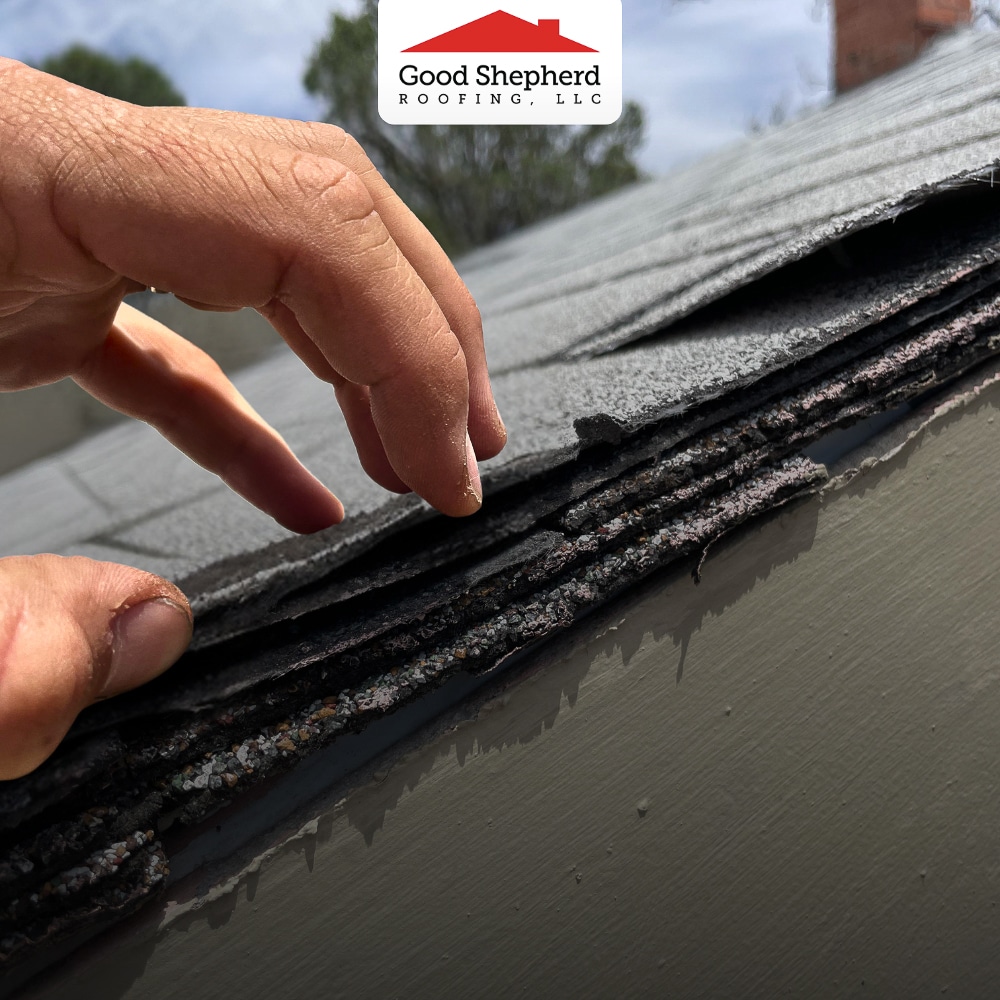The Shock: Some Roofers Put New Roofs Over Old Ones
It sounds unbelievable, but it happens more often than you’d think: instead of removing the old Shingles, some roofers install a brand-new roof directly on top of the existing one.
Sometimes, they’ll tell you upfront—pitching it as a “faster and cheaper option.” Other times, they don’t say anything at all. Homeowners assume they’re paying for a Full Replacement, when in reality, the contractor is just covering up problems and pocketing the savings from skipping the tear-off.
The result? You get a roof that looks fine at first but is hiding serious issues underneath.
Why Roofers Sell the Idea of Roof-Overs ?
Roof-overs are a bad deal for homeowners, but for some roofers, they’re an easy sell. Here’s why:
- It’s Cheaper for Them: No tear-off means no dumpster fees or disposal costs.
- It’s Faster: A roof-over takes less time, so they can move on to the next job.
- It Sells Easily: “Two layers of protection” sounds good in a sales pitch—even if it’s misleading.
- More Profit: They charge close to the same price while cutting corners, which means more money in their pocket.
For contractors who value volume over quality, a roof-over is a tempting shortcut. But it’s the homeowner who pays the price in the long run.
The Hidden Problems With Roof-Overs
At first glance, a roof-over might look like a money-saver. But here’s what really happens when a new roof is nailed on top of the old one:
1. Hidden Damage Gets Buried
When the old shingles aren’t removed, the roofer can’t see what’s happening underneath. Rotten decking, mold, or leaks don’t get fixed—they just get trapped under a new layer. From the ground, you won’t notice until water makes its way into your ceilings or attic, and by then, the Damage has already spread.
2. Extra Weight Strains Your Home
Shingle roofs are engineered for one layer. Adding a second nearly doubles the weight, which can stress rafters, trusses, and decking. Over time, this added load can cause structural sagging, making your roofline uneven and sometimes even unsafe.
3. Shortened Roof Life (and Blistering Risk)
Two layers of shingles trap heat. Instead of reflecting and releasing it, the old shingles underneath act like insulation, baking the new shingles from below. This accelerates deterioration and can cause blistering—small raised bubbles where trapped heat or moisture forces its way out.
Blistering doesn’t just look bad; it weakens shingles, making them more likely to crack or lose granules. A roof that should last 20–25 years may lose a decade or more of usable life just because of the trapped heat.
4. Warranties and Insurance Risks
Most manufacturers specifically state that warranties do not cover roof-overs. Why? Because the new shingles can’t perform properly when installed over an old roof. On top of that, if an insurance adjuster discovers multiple layers during a claim, they may deny coverage, labeling it as improper installation or lack of maintenance.

What Homeowners Should Do Instead?
The only way to ensure your roof is done right is with a full tear-off. That means removing every layer of old shingles and inspecting the decking underneath before installing the new roof.
A proper tear-off ensures:
- Damaged or rotten wood is replaced.
- Leaks and weak spots are repaired.
- Ventilation isn’t blocked by extra layers.
- Your roof gets its full expected lifespan.
Your warranty and insurance coverage remain valid.
Don’t Let Shortcuts Cost You Later
If a roofer ever suggests putting new shingles over your old ones—or if you’re not sure what’s under your roof today—get clarity before you spend thousands. Schedule a Free Roof Inspection Today and protect your home the right way.

